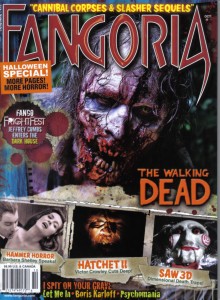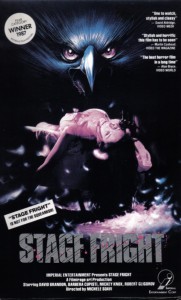 Robert Bloch claimed the exploits of Ed Gein, Wisconsin murderer and grave robber, inspired him to write Psycho. After reading Bloch’s landmark novel for the article “The Forgotten Norman Bates”, I believe I’ve uncovered another inspiration for one of Norman Bates’ personalities. The Norman Bates who steals his mother’s body, dresses in her clothes, and murders Mary Crane is based on Ed Gein. But the “Normal” Norman personality who takes care of his sick mother, shows a quick temper when his views are challenged, and cleans up after Mother whenever she makes a mess is based on a man who spent the last months of his life taking care of his sick mother. The Normal Norman personality is inspired by the final days of writer Robert E. Howard.
Robert Bloch claimed the exploits of Ed Gein, Wisconsin murderer and grave robber, inspired him to write Psycho. After reading Bloch’s landmark novel for the article “The Forgotten Norman Bates”, I believe I’ve uncovered another inspiration for one of Norman Bates’ personalities. The Norman Bates who steals his mother’s body, dresses in her clothes, and murders Mary Crane is based on Ed Gein. But the “Normal” Norman personality who takes care of his sick mother, shows a quick temper when his views are challenged, and cleans up after Mother whenever she makes a mess is based on a man who spent the last months of his life taking care of his sick mother. The Normal Norman personality is inspired by the final days of writer Robert E. Howard.
In 1933, Bloch began a correspondence with H. P. Lovecraft which lasted until Lovecraft’s death in 1937. Lovecraft’s letters are full of praise and suggestions concerning Bloch’s early steps in writing weird fiction, but they also contain many anecdotes about the other members in Lovecraft’s circle of friends, including Robert E. Howard. Sometime in late June 1936, Lovecraft sent Bloch a letter detailing Howard’s suicide. At first, Lovecraft doesn’t believe the news but states “I had a long normal letter from him (Howard) dated May 13th. He was worried about his mother’s health, but otherwise seemed quite all right.” Lovecraft ends the letter with a last moment addition stating “Just had word from Two-Gun’s (REH) father. Sad report all too true. REH shot himself when he learned that his mother’s illness was fatal. REH’s melancholy streak must have run deeper than we thought.”
After finishing what turns out to be her final meal, Mary Crane sets Norman Bates off by suggesting he place his mother in an institution. Robert E. Howard had plenty of bad experiences with placing a sick mother in sanatoriums. Hester Howard spent several weeks in Torbett Sanatorium located in Marlin, Texas and another sanatorium near San Angelo. Mrs. Howard’s tuberculosis would only get worse and the sanatoriums would send her to a hospital. Eventually, Robert Howard would take his mother home so his elderly father, Dr. Isaac Howard, could treat her.
One of Norman’s duties as a good son is cleaning up when Mother makes a mess. In Psycho, Norman cleans the bloody bathroom and hides Mother’s victims in the swamp. Robert Howard, also a good son, had to clean a different type of mess. A letter from Robert Howard to Lovecraft dated February 11, 1936 reveals Howard has “had little opportunity to do any writing of any kind” due to his mother’s deteriorating health. According to Howard, his mother “requires frequent aspirations” and “is subject to distressing and continual sweats, and naturally has to have constant attention.” The Howard family hired several women to help with Hester’s care, but none of them lasted very long. Hester Howard’s constant care always fell on Robert’s shoulders.
There are a few other clues in Psycho linking Norman Bates to Robert E. Howard. Texas, Howard’s home state, is mentioned many times because Mary and Lila Crane live there. After Mary’s death, Norman keeps watch for cars with Texas license plates because he knows someone will come looking for the murdered girl. Norman’s library includes volumes on ancient cultures, barbaric races, cults, and occultism which are subjects Howard researched before writing his weird adventure tales. Lila Crane, while searching Bates’ house, discovers Norman’s hidden stash of pornography. Robert M. Price, in his introduction for Robert E. Howard Selected Letters 1931-1936, claims Howard had a porn collection and used it for inspiration when writing tales for Spicy-Adventure Stories.
Robert Bloch was inspired to write Psycho after reading about Ed Gein’s exploits but I contend parts of the novel were inspired by Robert E. Howard’s last days as chief caregiver for his sick mother. In Chapter Nine, Norman Bates realizes he will always be mommy’s little boy. The only time Norman feels like a somebody is when he’s lost in a book. Robert E. Howard could never escape being mommy’s little boy, either. When he was writing for pulp mags or letters to friends, Howard was Two-Gun Bob, Terror of Cross Plains. Howard had fans, admirers, and editors who wanted to publish his stories. But in the end, Howard was just Hester Howard’s frightened little boy. On June 11 1936, Robert E. Howard shot himself moments after he learned his mother would never awaken from a coma. Why did the creator of Conan, Kull, Solomon Kane, and many other characters end his life when he was so close to being free from the burden that had crippled his writing for so long? Maybe Norman Bates is right when he says “I think perhaps all of us go a little crazy at times.”
I couldn’t have written this article without the following books: H.P. Lovecraft: Letters to Robert Bloch, Robert E. Howard: Selected Letters 1923-1930, Robert E. Howard: Selected Letters 1931-1936, and of course Robert Bloch’s Psycho.
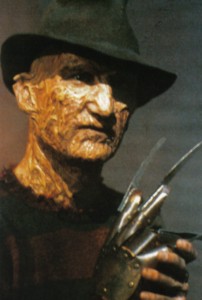 The 2010 New York City Horror Film Festival will feature a slasher legend and a slasher musical. Robert Englund will receive this years Lifetime Achievement Award on November 13th, at 10:00 P.M. After the ceremony there will be a special screening of the original A Nightmare on Elm Street. Englund will also attend a genre panel with Bill (Maniac) Lustig on November 14th at 1:00 P.M.
The 2010 New York City Horror Film Festival will feature a slasher legend and a slasher musical. Robert Englund will receive this years Lifetime Achievement Award on November 13th, at 10:00 P.M. After the ceremony there will be a special screening of the original A Nightmare on Elm Street. Englund will also attend a genre panel with Bill (Maniac) Lustig on November 14th at 1:00 P.M.
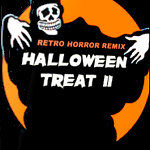 My sometimes collaborator but always friend Dustin over at Retro Horror Remix recently released Halloween Treat 2 though the internet’s version of VCD, the torrent.
My sometimes collaborator but always friend Dustin over at Retro Horror Remix recently released Halloween Treat 2 though the internet’s version of VCD, the torrent. 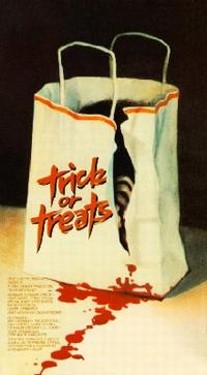 Every Halloween on Retro Slashers I mention Gary Graver’s Trick Or Treat (1982). A movie deeply underloved, even by the slasher crowds that hold Don’t Go In The Woods Alone and The Prey up as pinnacles of retro-slasherdom.
Every Halloween on Retro Slashers I mention Gary Graver’s Trick Or Treat (1982). A movie deeply underloved, even by the slasher crowds that hold Don’t Go In The Woods Alone and The Prey up as pinnacles of retro-slasherdom. 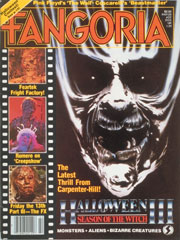 And now that I’m an adult? I dream of the genius that could result in taking those early Myers-like chase-scenes in the movie and trimming around the whole conspiracy plot to recut the movie into a slasher-centric short that better falls next to the first two.
And now that I’m an adult? I dream of the genius that could result in taking those early Myers-like chase-scenes in the movie and trimming around the whole conspiracy plot to recut the movie into a slasher-centric short that better falls next to the first two.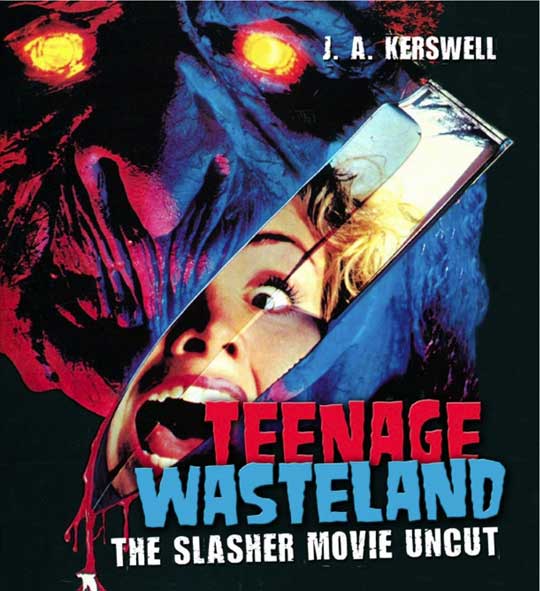

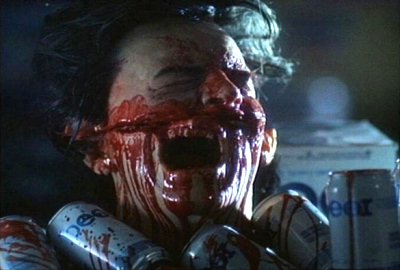
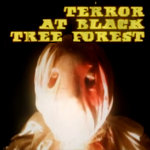 Here’s the teaser to Terror At Black Tree Forest, a movie I have the producer credit on. Dustin Ferguson wrote and directed it. He edited Sleepaway Camp IV: The Survivor for me, so this ended up sort of a fun trade-off. Dustin crafted a really tight indie throwback to The Forest and Don’t Go In The Woods. You can blame me for the title, which is a homage to 70’s fare like The Town That Dreaded Sundown, of which this slasher has a few elements in common.
Here’s the teaser to Terror At Black Tree Forest, a movie I have the producer credit on. Dustin Ferguson wrote and directed it. He edited Sleepaway Camp IV: The Survivor for me, so this ended up sort of a fun trade-off. Dustin crafted a really tight indie throwback to The Forest and Don’t Go In The Woods. You can blame me for the title, which is a homage to 70’s fare like The Town That Dreaded Sundown, of which this slasher has a few elements in common.